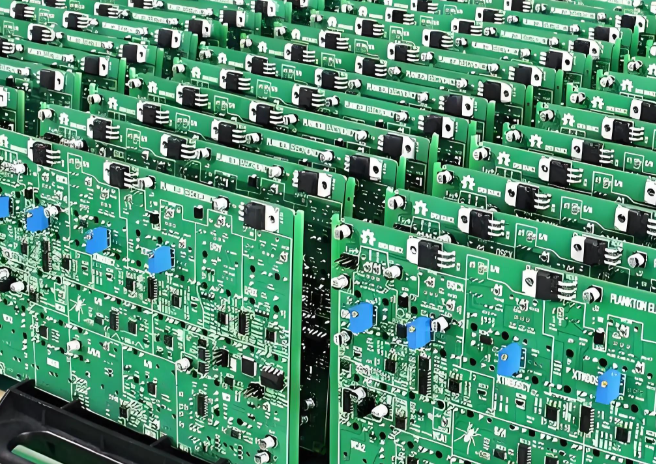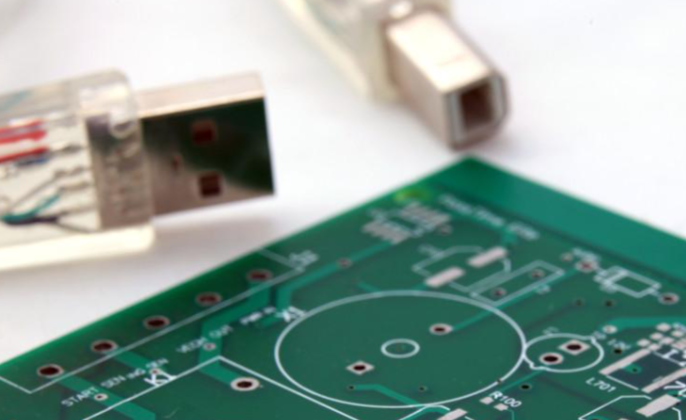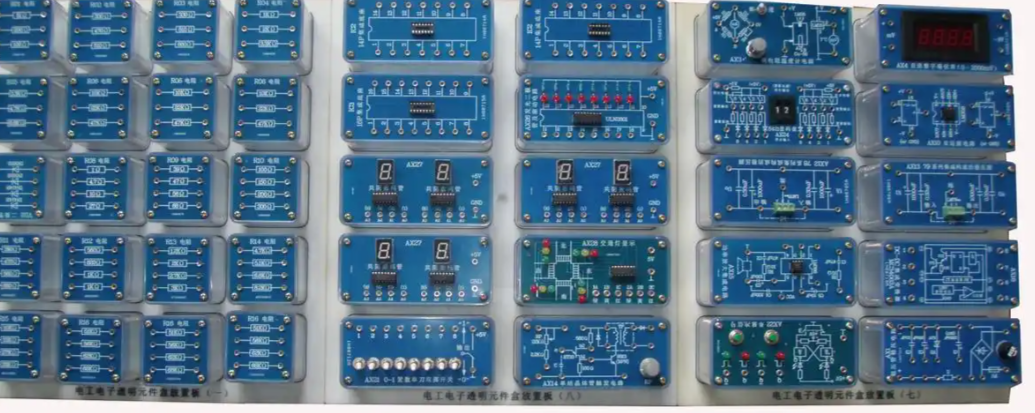Well-Known Imported Electronic Components Manufacturers: A Guide to Global Leaders
The global electronics industry is a complex and intricate ecosystem, powered by millions of components that form the backbone of every modern device, from smartphones and laptops to medical equipment and automotive systems. For engineers, procurement specialists, and business leaders, selecting the right components is not merely a purchasing decision; it is a strategic choice that impacts product performance, reliability, time-to-market, and ultimately, brand reputation. While domestic suppliers play a crucial role, the pursuit of cutting-edge technology, specialized functionality, and superior quality often leads companies to seek out well-known imported electronic components manufacturers. These global giants set the industry standards, drive innovation, and possess the manufacturing scale to meet the demands of worldwide markets. Navigating this landscape requires an understanding of who these key players are, the distinct advantages they offer, and the strategic considerations involved in sourcing from them. This article provides a comprehensive overview of the leading imported component manufacturers and offers insights into building a resilient and innovative supply chain.

The Titans of Technology: Leading Manufacturers by Component Category
The term “electronic components” encompasses a vast array of products. To understand the landscape, it is best to examine the leading manufacturers within specific critical categories. These companies have earned their reputations through decades of innovation, consistent quality, and massive research and development investments.
1. Semiconductors and Integrated Circuits (ICs)
This is arguably the most critical and competitive segment. Semiconductors are the brains of modern electronics, and the manufacturers in this space are among the largest and most technologically advanced companies in the world.
- Analog Devices (ADI) - USA: A dominant force in data conversion and signal conditioning technology. Analog Devices is renowned for its high-performance analog, mixed-signal, and digital signal processing (DSP) ICs. Their components are essential in applications requiring precise measurement and interpretation of real-world phenomena, such as industrial automation, automotive systems, and healthcare instrumentation. The company’s strength lies in solving complex engineering challenges related to power management, temperature sensing, and motion control.
- Texas Instruments (TI) - USA: A cornerstone of the semiconductor industry, TI’s portfolio is incredibly broad. Texas Instruments is a market leader in analog chips, embedded processors like their Sitara and MSP430 lines, and digital light processing (DLP) technology. From simple amplifiers to complex system-on-chips (SoCs), TI components are found in nearly every electronic market. Their extensive technical documentation and support resources make them a favorite among engineers at all levels.
- Infineon Technologies - Germany: With a strong European heritage, Infineon has carved out leadership positions in power semiconductors, automotive electronics, and security controllers. Infineon’s expertise in silicon and silicon carbide (SiC) power products is critical for energy-efficient solutions in electric vehicles, renewable energy systems, and industrial drives. Their automotive microcontrollers are considered among the most reliable in the industry.
- NXP Semiconductors - Netherlands: Born from the legacy of Philips, NXP is a global leader in secure connectivity solutions. NXP is particularly dominant in the automotive sector, providing microcontrollers (MCUs), radar systems, and vehicle networking solutions. Furthermore, they are a top supplier for near-field communication (NFC) and identification products, making them essential for mobile payments and access control systems.
2. Passive Components
While less glamorous than processors, passive components like resistors, capacitors, and inductors are the fundamental building blocks of any circuit board. Their reliability is non-negotiable.
- Murata Manufacturing - Japan: Often called the “King of Passives,” Murata is a behemoth in ceramic capacitors, SAW filters, and EMI suppression components. Murata Manufacturing is synonymous with miniaturization and reliability, producing billions of tiny yet critical components that enable the compact design of modern electronics. Their expertise in materials science allows them to create components with exceptional performance characteristics.
- TDK Corporation - Japan: Another Japanese powerhouse, TDK is famous for its inductive components and power supplies. TDK offers a vast range of products including ceramic capacitors, ferrite cores, and sensors, but is particularly well-regarded for its expertise in magnetics. Their components are vital for power conversion, noise suppression, and wireless charging modules.
- Taiyo Yuden - Japan: Specializing in advanced passive components, Taiyo Yuden is a key supplier for the telecommunications and computing industries. Taiyo Yuden is highly respected for its high-quality multilayer ceramic capacitors (MLCCs) and inductors, which are designed to meet the demanding requirements of high-frequency circuits found in servers and networking equipment.
3. Connectors and Interconnects
These components provide the essential pathways for signals and power to flow between different parts of a system. Durability and precision are paramount.
- TE Connectivity (TE) - Switzerland: TE Connectivity is arguably the world’s largest connector manufacturer. TE Connectivity’s product portfolio is immense, covering connectors for virtually every industry including automotive, aerospace, industrial equipment, and datacom. They are known for developing ruggedized solutions that can withstand extreme temperatures, vibrations, and moisture.
- Amphenol Corporation - USA: Amphenol is a leading innovator in interconnect systems. Amphenol excels in designing high-speed data connectors for communications infrastructure and harsh-environment connectors for aerospace and military applications. Their products are often at the forefront of data rate performance, enabling the next generation of networking technology.
- Molex - USA (a subsidiary of Koch Industries): Molex is another global giant with a comprehensive portfolio of connectors, cables, and interconnect solutions. Molex provides critical components for consumer electronics, data centers, and medical devices, often working closely with customers to develop custom solutions for specific design challenges.
The Strategic Advantages of Sourcing from Imported Manufacturers
Choosing to source components from these internationally recognized manufacturers offers several compelling benefits that can significantly enhance a company’s competitive edge.
1. Access to Cutting-Edge Innovation and R&D: These companies invest billions of dollars annually in research and development. By incorporating their latest components, your products can leverage state-of-the-art technology that may not be available from smaller or domestic suppliers. This could mean lower power consumption, higher processing speeds, or new functionalities that differentiate your product in the marketplace.
2. Unmatched Quality and Reliability Standards: Reputation is everything for these manufacturers. They adhere to stringent quality control processes (e.g., ISO/TS 16949 for automotive) and their components undergo rigorous testing. Sourcing from well-known imported manufacturers significantly reduces the risk of field failures, which can lead to costly recalls and damage to brand equity. Their long-term reliability data provides engineers with the confidence needed for designing mission-critical systems.
3. Global Supply Chain and Scalability: These corporations have a global footprint with manufacturing facilities, distribution centers, and sales support networks around the world. This allows them to manage large-scale production runs efficiently. For companies planning high-volume products or global rollouts, partnering with these manufacturers ensures a more stable and scalable supply chain capable of meeting demand fluctuations.
4. Comprehensive Technical Support and Documentation: Leading manufacturers provide an extensive library of resources, including detailed datasheets, application notes, reference designs, simulation models (SPICE), and development kits. This support ecosystem dramatically accelerates the design process by providing engineers with proven solutions and expert guidance.
Navigating Challenges: Counterfeits, Supply Chains, and Strategic Sourcing
Despite the clear advantages, sourcing imported components presents challenges that must be strategically managed.
The Pervasive Threat of Counterfeit Components: The high demand and value of components from brands like TI, ADI, and Murata make them prime targets for counterfeiters. Fake components can lead to catastrophic system failures. Mitigating this risk requires sourcing exclusively from authorized distributors or directly from the manufacturer. It is crucial to verify partners thoroughly.
Supply Chain Volatility and Lead Times: Recent global events have highlighted the fragility of extended supply chains. A disruption at a single fab in Asia can cause worldwide shortages. Relying heavily on a single imported source can be risky. Developing a robust component engineering strategy that includes identifying alternates or second sources during the design phase is essential for resilience.
Logistics and Total Cost of Ownership (TCO): Importing components involves navigating customs duties, international shipping logistics, currency exchange rates,and potential delays.This can increase the complexityand total cost beyondthe simple component price.A strategic procurement team must factor these elements into the TCO calculation.
In this complex environment,a platform like ICGOODFIND can be an invaluable resource.It serves as a specialized search engineand information hubfor electronic components aggregating data from numerous manufacturersand distributors.For engineersand buyers navigatingthe vast seaof part numbersand datasheets sucha tool streamlinesthe research process helpsin identifying authorized sourcesand provides crucial supply chain intelligence makingthe taskof managingimportedcomponents significantlymore efficient.
Conclusion
The landscape of well-known imported electronic components manufacturers is defined by a group of highly specialized, innovative,and reliable companies that drive technological progress across all industries.From the semiconductor masteryof Analog Devicesand Texas Instrumentsto the passive component dominanceof Murataand TDK these leaders providethe essential ingredientsfor next-generation electronic products.While challenges relatedto supply chain managementand counterfeit prevention existthe strategic benefits—accessto innovation guaranteed qualityand global scalability—are immense.The keyto success liesin building strong relationshipswith authorized distributors conducting thorough due diligenceand leveraging toolsand platformsthat simplifythe sourcing process By strategically engagingwith these global titans businessescan securethe high-performance components neededto build superior reliableand competitive productsforthe global market.















